Paradigm shift to sustainable systems
Dr. Lakhveer proposes to reduce the cost of bioreactors
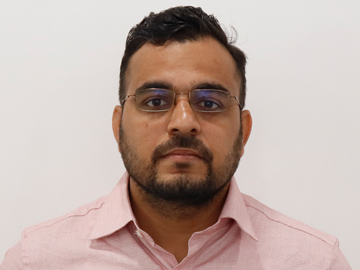 Reputed publishing house Elsevier has published the illuminating research work of Dr. Lakhveer Singh, Assistant Professor, Department of Environmental Science. The book named Bioreactors: Sustainable Design and Industrial Applications in Mitigation of GHG Emissions (1st Edition), is co-edited by Durga Mahapatra, Oregon State University, USA, Scientist and Dr Abu Yousuf, Assistant Professor, Shahjalal University of Science and Technology, Bangladesh.
Reputed publishing house Elsevier has published the illuminating research work of Dr. Lakhveer Singh, Assistant Professor, Department of Environmental Science. The book named Bioreactors: Sustainable Design and Industrial Applications in Mitigation of GHG Emissions (1st Edition), is co-edited by Durga Mahapatra, Oregon State University, USA, Scientist and Dr Abu Yousuf, Assistant Professor, Shahjalal University of Science and Technology, Bangladesh.
Dawn of the 21st century has witnessed a solemn crisis in petroleum-derived fuels, consequently causing a major setback in chemicals/bio-products industries. Also, the researchers identify that the problem of climate change needs to be addressed by reducing the emission of greenhouse gases (GHGs). Dr. Lakhveer states, “To cope up with soaring energy demands, the present generation requires a paradigm shift from fossil-based resources to renewables and sustainable systems which accentuates the necessity of bioreactors for employing bioenergy and bio-products recovery”.
Presently, sophisticated bioreactor technologies have resulted in towering industrial production significantly contributing to the global economy and benefiting human life. Bioreactors have a substantial role in building a sustainable economy and providing food, feed, energy and other basic amenities for a quality life. Numerous bioreactors have evolved over time through sustainable research targeting commercialization.
A bioreactor is a vessel-like device that provides a uniform background for microorganisms to grow. It maintains an uninterrupted balance in the biochemical reactions carried out by these microorganisms to produce the desired metabolites. The applications of bioreactors extend to biomass production such as microalgae, single-cell protein, and yeast. For metabolite formation like organic acids, ethanol, antibiotics, aromatic compounds, and pigments, bioreactors are absolute. It also contributes to transforming substrates like steroids along with supplementing to production of both the intra and extracellular enzymes.
Recently, Dr Singh has developed an innovative cost-effective hybrid bioelectrochemical reactor (15.0 L) in collaboration with Oregon State University, USA, capable of generating efficient hydrogen at a cost less than $2/kg of H2 from lignocellulose hydrolysates or wastewater.
“In our research we have developed numerous types of bioreactors ranging in size from 5.0 to 100 L. A few examples are immobilized up-flow bioreactor, two-stage thermophilic and mesophilic fermenter, sequential dark and photobioreactor as well as hybrid bioelectrochemical reactor for bioenergy production and valuable products recovery from various industrial and agriculture waste. “ informs Dr. Lakhveer.
The book “Bioreactors” presents and compares the foundational concepts, state-of-the-art design and fabrication of bioreactors. Solidly based on theoretical fundamentals, it examines various aspects of the commercially available bioreactors, that includes construction, fabrication, design, modeling, simulation, development, operation, maintenance, management, and target applications for biofuels production as well as bio-waste management. Emerging issues in commercial feasibility are explored in the book along with covering the constraints and pathways for upscaling. It also carries out rigorous techno-economic assessment.
“This book provides researchers and engineers in the biofuels and waste management sectors a clear understanding of the actual potential of various advanced bioreactors for their requirements. It allows them to embark on informed decisions while selecting the appropriate technology models for sustainable systems development and commercialization”, says Dr. Lakhveer.
Advancing his work, Dr Singh is developing efficient and economical bioreactors for commercial applications in the energy and water sectors. In this regard, three international patents have been filed. In the next few months, two more of his books are to be published by American Chemical Society, ACS and Elsevier. The books will emphasize issues and frontiers of reactors technology such as operation, novel design, cost analysis, novel electrodes, nano catalytic materials and other extended applications of bioreactors.
- Published in News, Research News
Small-World Wireless Sensor Network to Help Making Smart Applications for Industries
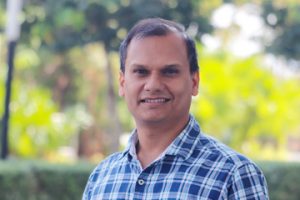 Dr Om Jee Pandey, Assistant Professor, Department of Electronics and Communication Engineering, has recently published two papers in renowned IEEE journals. His paper “Secrecy Performance Analysis of Two-way Relay Non-Orthogonal Multiple Access Systems” was published in IEEE Access Journal, having an impact factor: 4.06. Whereas, “Fault-Resilient Distributed Detection and Estimation over an SW-WSN Using LCMV Beamforming” was published in IEEE Transactions in Network and Service Management (Impact factor: 4.682). The study was done in associations with Prof. Rajesh M Hegde, Department of Electrical Engineering, IIT Kanpur and Prof. Ha H. Nguyen, Department of Electrical and Computer Engineering, University of Saskatchewan, Saskatoon, Canada. His research was focused on developing efficient Wireless Sensor Network services in small-world models. The proposed research can be applied in developing many state-of-the-art applications in the areas related to healthcare systems, climate-smart agriculture, intelligent transportation, home automation, manufacturing, smart utilities, and industries etc.
Dr Om Jee Pandey, Assistant Professor, Department of Electronics and Communication Engineering, has recently published two papers in renowned IEEE journals. His paper “Secrecy Performance Analysis of Two-way Relay Non-Orthogonal Multiple Access Systems” was published in IEEE Access Journal, having an impact factor: 4.06. Whereas, “Fault-Resilient Distributed Detection and Estimation over an SW-WSN Using LCMV Beamforming” was published in IEEE Transactions in Network and Service Management (Impact factor: 4.682). The study was done in associations with Prof. Rajesh M Hegde, Department of Electrical Engineering, IIT Kanpur and Prof. Ha H. Nguyen, Department of Electrical and Computer Engineering, University of Saskatchewan, Saskatoon, Canada. His research was focused on developing efficient Wireless Sensor Network services in small-world models. The proposed research can be applied in developing many state-of-the-art applications in the areas related to healthcare systems, climate-smart agriculture, intelligent transportation, home automation, manufacturing, smart utilities, and industries etc.
In order to develop efficient Wireless Sensor Network (WSN) services, several methods have been proposed for node localization, clustering of sensor nodes, new routing algorithms, adaptive duty cycles, usage of mixed-transmission models, placement of intelligent gateways, usage of mobile elements, and bypassing holes. However, the introduction of small-world characteristics in a WSN has hitherto not been used in this context. A small-world network is typically characterized by a low average path length and high average clustering coefficient and has been widely used to model social networks. However, small world models have not been used in the development of WSN. The primary objective of this research is to develop small world models for WSN services such as sensor node localization, data gathering, data fusion, network lifetime maximization, energy-balancing, reduced data transmission delay, time synchronization, energy-harvesting, and robust distributed detection and estimation. A small world WSN reduces the number of hops required for data transmission, and maximal utilization of sensor nodes closer to the sink. Other advantages of small world WSN include efficient bandwidth utilization, increased network lifetime, and fast convergence of event detection and parameter estimation. Small world WSN developed in tandem with novel routing strategies leads to improved WSN services for various applications.
In WSNs, sensor devices transfer the data cooperatively using multiple hops over a network. Multiple hops required for data transmission over a WSN leads to reduced network performance in the context of device localization, energy efficiency, energy balancing, data latency, speed of event detection and parameter estimation, and network robustness. This is because of poor distance estimation between sensor device pairs, maximum utilization of sensor devices closer to the sink, and a short radio range of sensor devices. Hence, the primary focus of this research work is to reduce the number of hops required for data transmission. In this context, Small World Characteristics (SWC) can be introduced in a WSN, leading to a small world WSN (SW-WSN). An SW-WSN is a well-connected network with reduced hop counts between node pairs.
Small world phenomena were first observed by Stanely Milgram in social connectivity of people. Later, it came out as a theory of “six degrees of separation”. Six degrees of separation claims that all people are six, or fewer, social connections away from each other. This theory is also known as the 6 Handshakes rule. Further, small-world phenomena have been investigated in graphs. Subsequently, SWC is observed in wireless networks. In general, small world WSNs (SW-WSNs) are characterized by low Average Path Length (APL) and high Average Clustering Coefficient (ACC). For an undirected WSN with N nodes, representing a regular network, the APL increases linearly with the number of nodes present in the network. On the other hand, in a WSN having SWC the APL, between two randomly selected nodes grows proportionally to the logarithm of the number of nodes in the network. “WSNs are spatial graphs, where links are created using radio connectivity. There is a limit on the radio range of a sensor node, hence in such networks, the long-range connections are generally absent. Thus, these networks are clustered, but they do not experience small-world phenomena. Hence, the primary focus of this work is to develop SW-WSN using various methods leading to efficient WSN services” explained Dr Pandey.
Dr Pandey is now busy to take the studies further. His future projects include-
• Small World WSN (or SW-WSN) Development for Smart Healthcare.
• Cognitive SW-WSN for Energy-Efficient CPS and IoT applications.
• Climate Smart Agriculture using Cognitive SW Characteristics.
• Low-Latency and Intelligent Transportation over small world CPS.
• Multi Sensor Fusion over SW-WSN for CPS/IoT Applications.
• Information and Context Quality in WSN, IoT and CPS Networks.
- Published in ECE NEWS, News, Research News
Scaling up waste remediation through nanoenzymes
Dr. Lakhveer Singh on clean and affordable bioelectrofuels
“Nanoenzyme as a cutting-edge innovation that makes bioelectrofuels more affordable and efficient for sustainable future”
Dr. Lakhveer Singh, Assistant Professor, Department of Environmental Science, publishes a paper on “Bioelectrofuel Synthesis by Nanoenzymes: Novel Alternatives to Conventional Enzyme” in the journal “Trends in Biotechnology” with an Impact factor of 13.74. The paper discusses the vital role of nanozymes to advance Bioelectrochemical cells platforms for improved bioelectrofuels generation and waste remediation. Nanozymes are nanomaterials with intrinsic enzyme-like characteristics that have gained importance over the past decade because of its capability to address the limitations of natural enzymes – low stability, high cost, and difficult storage.
Waste recycle and reuse is the need of the hour, and are the most prioritized research in the 21st century. Innovation with present-day technologies as “Bioelectrochemical cells” with a focus on waste remediation, recovery and reuse is believed to strengthen the resource security along with building a sustainable and resilient society. “In order to mitigate several challenges pertaining to the ineffectual performance of microbial catalysts in electrode frameworks, nanomaterial-based nanozymes exhibit capabilities to boost their efficiency by enhancing microbial connection and interaction with electrode surface.”, explains Dr. Lakhveer.
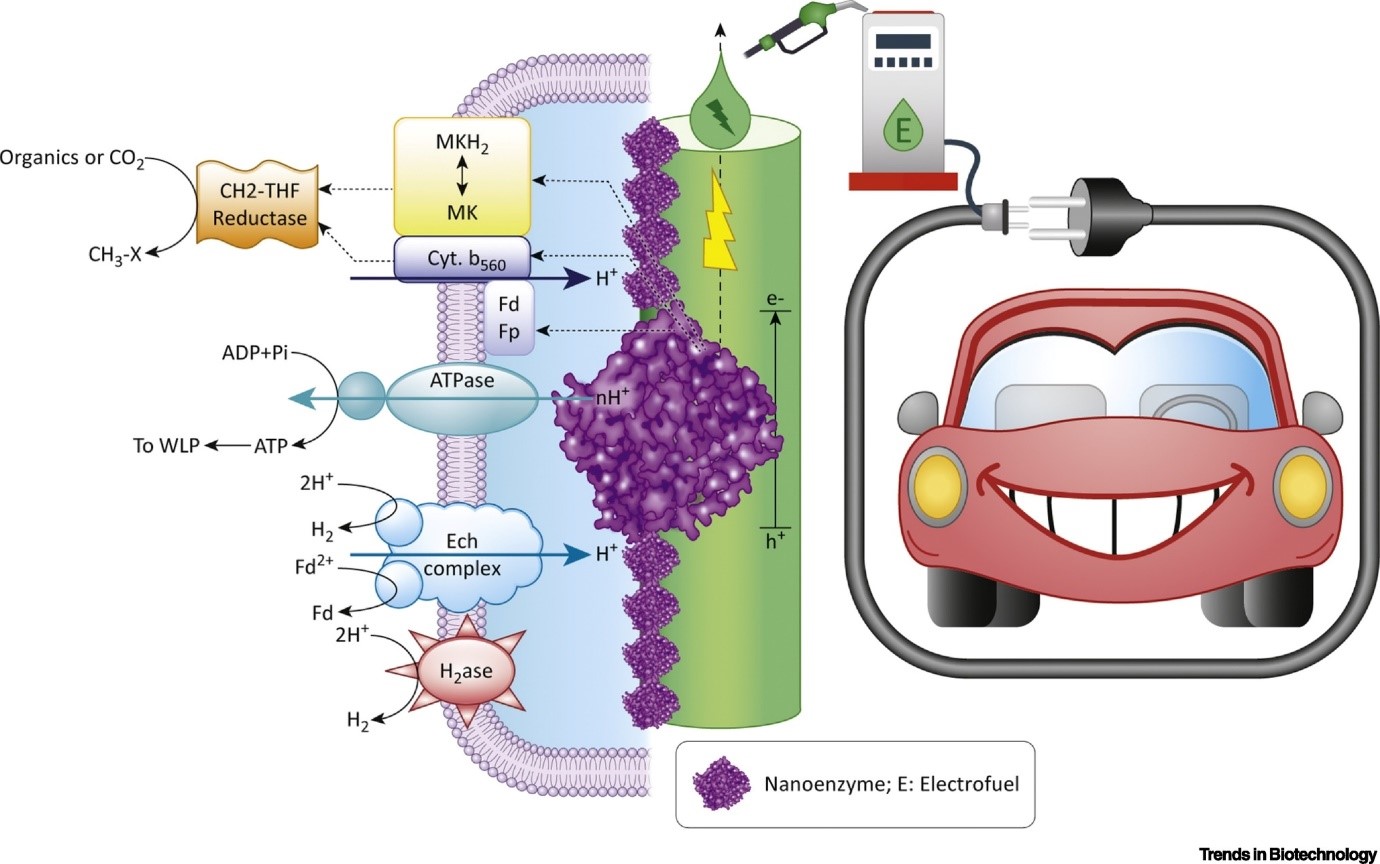 Mechanisms of Nanoenzyme–Microbe Interaction That Facilitate Bioelectrofuel Production
Mechanisms of Nanoenzyme–Microbe Interaction That Facilitate Bioelectrofuel Production
THe further says, “The application of nanoenzymes to replace natural enzymes for improved bioelectrofuel production has long been under-rated. Recent advancements in bioinspired mimetics have led to applying nanoenzymes as a favourable bifunctional or multifunctional tool to achieve large turnover frequencies and high stability in bioelectrochemical platforms. Despite a few technical impediments, nanoenzymes guarantees clean and affordable bioelectrofuels”.
For long-term operations, biocompatibility is observed to remain a challenge associated with nanoenzymes. This is because of the concurrent shape change of nanoparticles during its gradual decomposition that often alters their electrocatalytic behaviour in response to prolonged operation, thus adversely affecting the electrofuel productivity. This paves the path for the future research work of Dr. Lakhveer which will focus on the preparation of nanoenzymes based electrocatalysts with doping of plasmonic or paramagnetic noble metals. This will counter the issue of mass loading and slow down the gradual decomposition process to ensure uninterrupted bioelectrofuels supply during long-term operation.
- Published in News, Research News
Cost-effective shield against Coronavirus
Dr. Panchagunula Jayaprakash designs an improved alternative to regular masks
Dr. Panchagunula Jayaprakash, Assistant Professor, Department of Mechanical Engineering, has designed a FACE SHIELD embedded with 3D printing technology. During this pandemic that has led to an unprecedented global crisis, this face protection devised to protect users from the Novel Coronavirus, is made available at the minimum rate of Rs. 20 each. The major drawback of the commercially available Face Shields for engineering applications is its heavy weight which causes discomfort if worn for a longer period of time. This face mask that uses 3D printing technology alleviates the limitations of the regular masks currently used by doctors, policemen, and journalists.
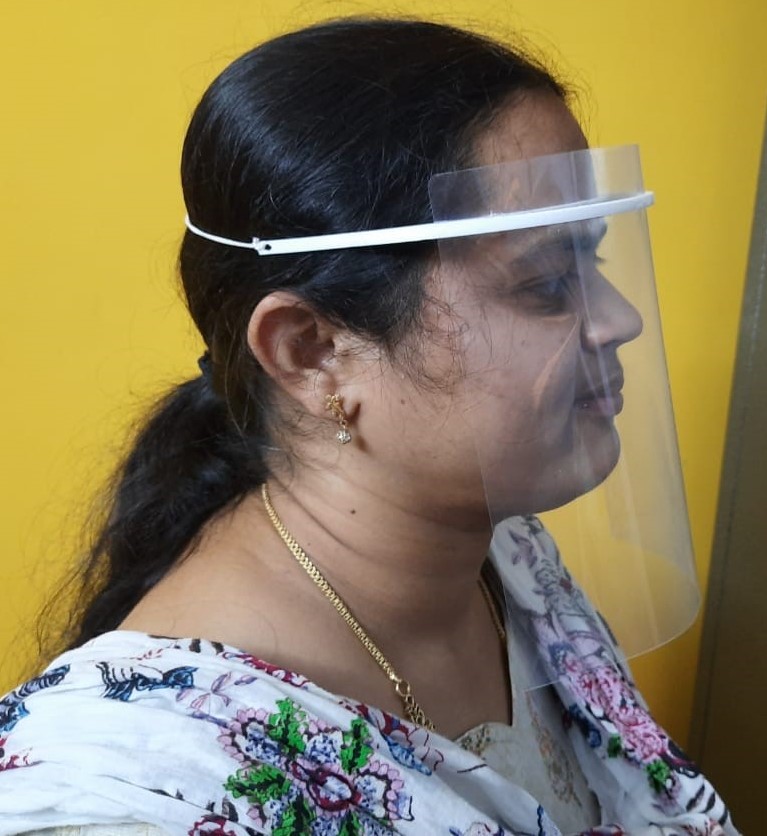 Head mounted Face Sheild
Head mounted Face Sheild
“With the advent of Covid-19, and due to the shortage of personal protective equipment, the health workers such as Doctors, Sanitary staff and Police are also getting infected. As they are the backbone of the society, I thought of designing a light weight Face Shield using 3D Printing (3DP) or Additive Manufacturing technique. The rudimentary advantages of 3D printing technology is the design flexibility and less lead time to manufacturing. “, explains Dr. Jayaprakash.
 Creation of CAD model
Creation of CAD model
 3D Printing
3D Printing
The regular masks barely cover the nose and mouth, whereas the Face Shield will be able to protect the eyes, mouth, nose, and ears so that one cannot get infected by the virus. Some of the medical and police personnel who use the regular masks suffer from facial irritation, making the Face Shield a comfortable and more effective alternative for all government officials on Covid-19 duty.
 Physical component
Physical component
Dr. Jayapraksh further says, “While manufacturing the Face Shield, 3D printing technology is used for designing a headband, upon which a 100 micron thick transparent plastic sheet is attached to ensure superior protection against the virus. It prevents air, dust, and liquids that are contaminated to come in contact with people. Also, there are no probable side effects on using the mask. If the government approves of its marketing, the face mask can be distributed among the public to prevent the widespread of Novel Coronavirus.”
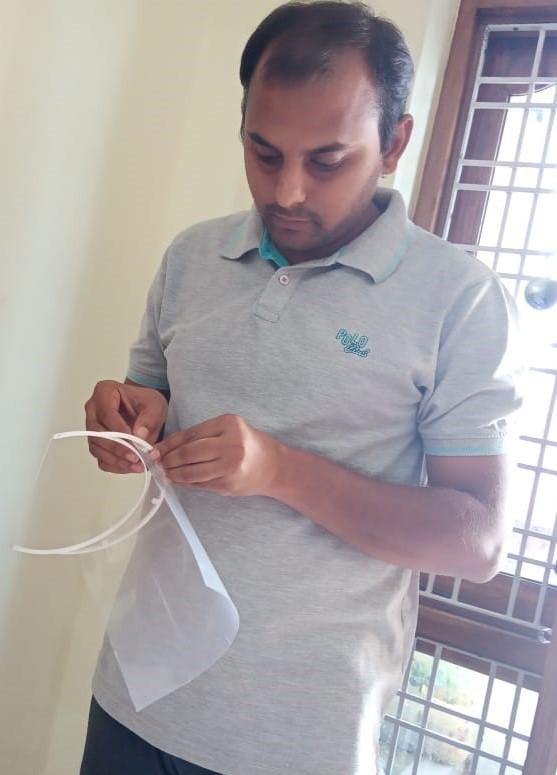 OHP sheet assembly
OHP sheet assembly
The management of SRM AP, Andhra Pradesh applauds Dr. Jayaprakash on designing the mask after relentlessly working on it for several days. Prof. Narayana Rao, Pro Vice-Chancellor of the University, has written to Adimulapu Suresh, Minister of Education, Andhra Pradesh, and Alla Kalikrishna Srinivas, Deputy Chief Minister of Andhra Pradesh, Minister for Health, Family Welfare and Medical Education, Andhra Pradesh, highlighting the importance of the facial cover and the many ways it can be regarded as a boon to the society as a whole. He said that the Face Shield would be beneficial to millions of students who would be attending regular classes once the educational institutions reopen.
- Published in Mechanical Engineering NEWS, News, Research News
Online adaptive fast output voltage tracking in DC power supply system
Remarkable research of Dr. Tousif Khan N is honoured with APJ Abdul Kalam Memorial International Travel Award
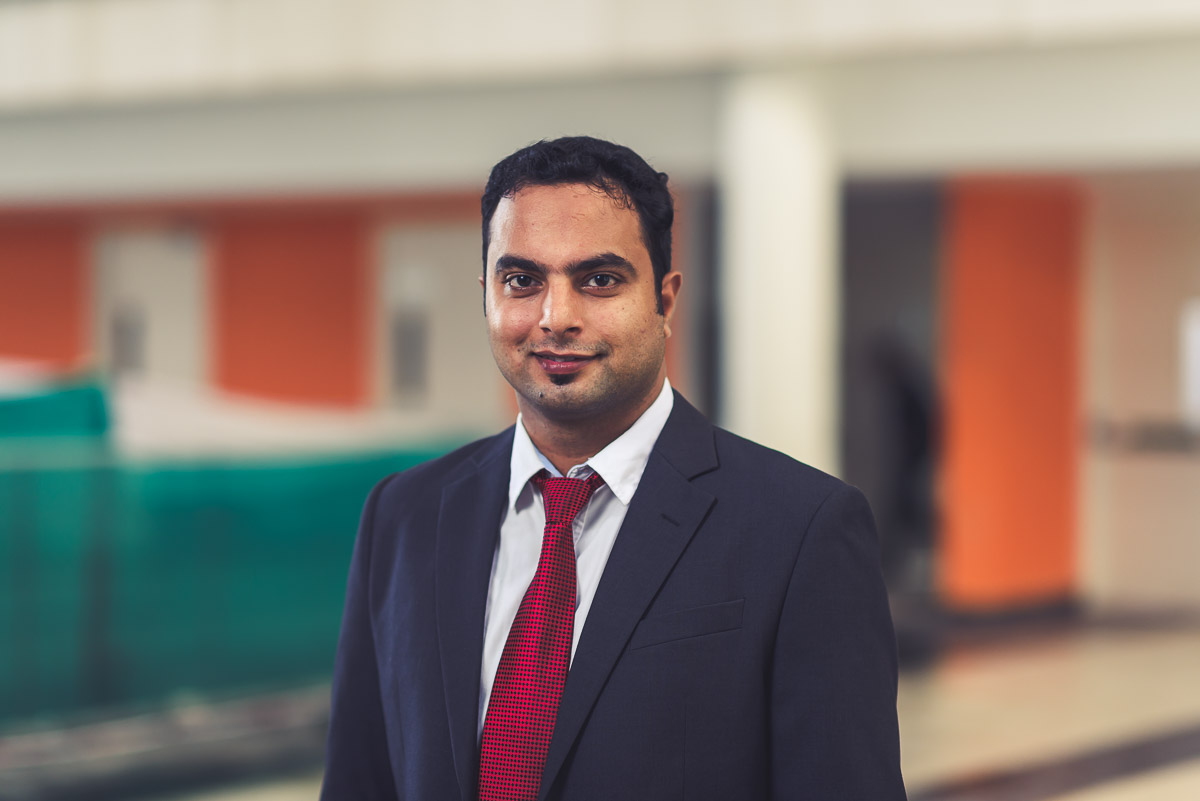 SRM University AP, Andhra Pradesh faculty, Dr. Tousif Khan N, Assistant Professor and Head of the Department, Department of Electrical and Electronics Engineering, is to present a paper “Laguerre Neural Network Driven Adaptive Control of DC-DC Step Down Converter” in the renowned International Federation for Automatic Control (IFAC) World Congress to be held in Germany during July 12-17, 2020. Further this research article is also selected for the prestigious APJ Abdul Kalam Memorial International Travel Award by the Automatic Control and Dynamic Optimization Society (ACDOS) chaired by Professor Ravi Gudi of Indian Institute of Technology Bombay.
SRM University AP, Andhra Pradesh faculty, Dr. Tousif Khan N, Assistant Professor and Head of the Department, Department of Electrical and Electronics Engineering, is to present a paper “Laguerre Neural Network Driven Adaptive Control of DC-DC Step Down Converter” in the renowned International Federation for Automatic Control (IFAC) World Congress to be held in Germany during July 12-17, 2020. Further this research article is also selected for the prestigious APJ Abdul Kalam Memorial International Travel Award by the Automatic Control and Dynamic Optimization Society (ACDOS) chaired by Professor Ravi Gudi of Indian Institute of Technology Bombay.
The research work of Dr. Tousif proposes a novel Laguerre neural network estimation technique for the approximation of unknown and uncertain load function, followed by its subsequent compensation in the adaptive backstepping controller. A detailed design of the proposed estimator and adaptive backstepping controller along with closed loop asymptotic stability have been presented. Further, the proposed control mechanism is evaluated through extensive numerical simulations while subjecting the converter to input voltage, reference voltage, and load resistance perturbations. Furthermore, the results are verified by testing the proposed controller on a laboratory prototype with DSP based TM320F240 controller board. The analysis of results reveals that the proposed control methodology for DC-DC step down converter offers a faster transient output voltage tracking with smooth and satisfactory inductor current response over a wide operating range. Dr. Tousif informs, “Under the class of DC-DC converters, the dynamics of DC-DC step down converter are nonlinear in nature and are largely influenced by both parametric and unanticipated external perturbations. In its closed loop operation, obtaining a precise output voltage tracking besides satisfactorily inductor current response is a challenging control objective. Hence, in this regard, this article proposes a solution.”
Electric power supply is the principal entity behind any electrical circuits and systems. Irrespective of their function in the digital domain, these circuits necessarily require a reliable and efficient energy source for their operations. Among the two existing forms of electrical energy, namely, the direct current (DC) and the alternating current (AC), the DC power finds wide use in numerous applications in the field of telecommunication, instrumentation, medical electronics, aerospace, defence and power transmission.
Ever since the fundamental innovations in DC systems by Thomas Alva Edison in 1880, DC rectification, and modulation method have remained central to various utilities. During the initial years, DC power conversion primarily resorted to the use of vacuum tube technology in delivering a desirable level of voltage from an AC source. The rectification stage was subsequently followed by filtering of the voltage at the output end. Nonetheless, the vacuum tube technology supported very low current density and featured a high ripple content in the DC voltage. Additionally, the output voltage was inconsistent or rather unregulated, making it inappropriate for DC power operated electrical and electronic systems. Much later in 1967, integrated series regulators were developed which eventually became popular as linear power supplies (LPS). Such a classical DC power generation method involved an AC transformer, AC-DC rectifier, and a voltage regulator in its assembly. The transistors in LPS operate under active region and dissipate large amounts of heat due to the voltage drop while high current flows through the collector-emitter junction, thereby causing substantial power loss and a very low energy efficiency. Even though they characterize the low level of noise and find better suitability in audio applications, yet their critical limitations of huge size, heavy weight and high cost make them infeasible for use in portable electronic devices.
In tandem to these aforementioned developments, the advancements in power semiconductor technology led to the invention of low cost reliable power switches exhibiting fast switching response. This proved to be instrumental in building an energy efficient switched mode power supply which gradually gained popularity. “Its impact on electrical technology was phenomenal, replacing conventional linear voltage supplies with switched mode power supplies giving rise to enhanced efficiency, light weight, compactness, and comparably lower cost. Such a modern DC conversion system primarily includes DC-DC converters, wherein the rectified input voltage is fed to the DC-DC converter circuits for obtaining specific voltage levels. The primary objective in DC-DC converters is to transfer the energy among different DC circuits functioning at a specific voltage and current levels. This process of energy transfer is performed by temporarily storing the energy from the input source in an operating mode, followed by releasing it in the other operational mode of the converter. Thus, one level of DC input voltage is converted to another level of average DC output voltage at the load end. Meanwhile, the converter being ideal is expected to consume no energy. Any consumption of energy in the converter interface amounts to direct power loss in the overall supply system. Typically, converters render high input-output conversion.”, enlightens Dr. Tousif Khan N. His notable research work offers to mitigate these issues, leading to the venerated APJ Abdul Kalam Memorial International Travel Award. Advancing his work in the future, Dr. Tousif will be closely working on the society’s activities with ACDOS as a member for mutual benefit.
- Published in Departmental News, EEE NEWS, News, Research News
Scaling up hydrogen production: an alternative energy source to conventional fuels
Chemical Engineering Journal publishes paper of Dr. Lakhveer Singh with Impact Factor 8.34
Dr. Lakhveer Singh, Assistant Professor, Department of Environmental Science, SRM University AP, Andhra Pradesh published a paper in the Chemical Engineering Journal with an Impact Factor of 8.34. His paper titled, Breaking the Loop: Tackling Homoacetogenesis by Chloroform to Halt Hydrogen Production-Consumption Loop in Single Chamber Microbial Electrolysis Cells is published in collaboration with Oregon State University.
Single Chamber Microbial Electrochemical Cells reactor is used to produce hydrogen. Since wastewater is used in the process, hydrogen consumers are present inside the reactors. The presence of homo acetogenesis and hydrogen production-consumption loop significantly hinders the efficient hydrogen recovery from this reactor. Removal of homo acetogenins remained a challenge that is mitigated by the research work conducted in this paper. Dr. Lakhveer informs, “Prof. Hong Liu is the mother of the bioelectrochemical system. I used to work with her for 1.5 years during my Post Doctorate. We developed the method to inhibit homo acetogenins in bioelectrochemical fuel cells for the first time to exhibit homo acetogenins which enhance the hydrogen production in scaled-up microbial electrochemical (MEC).”
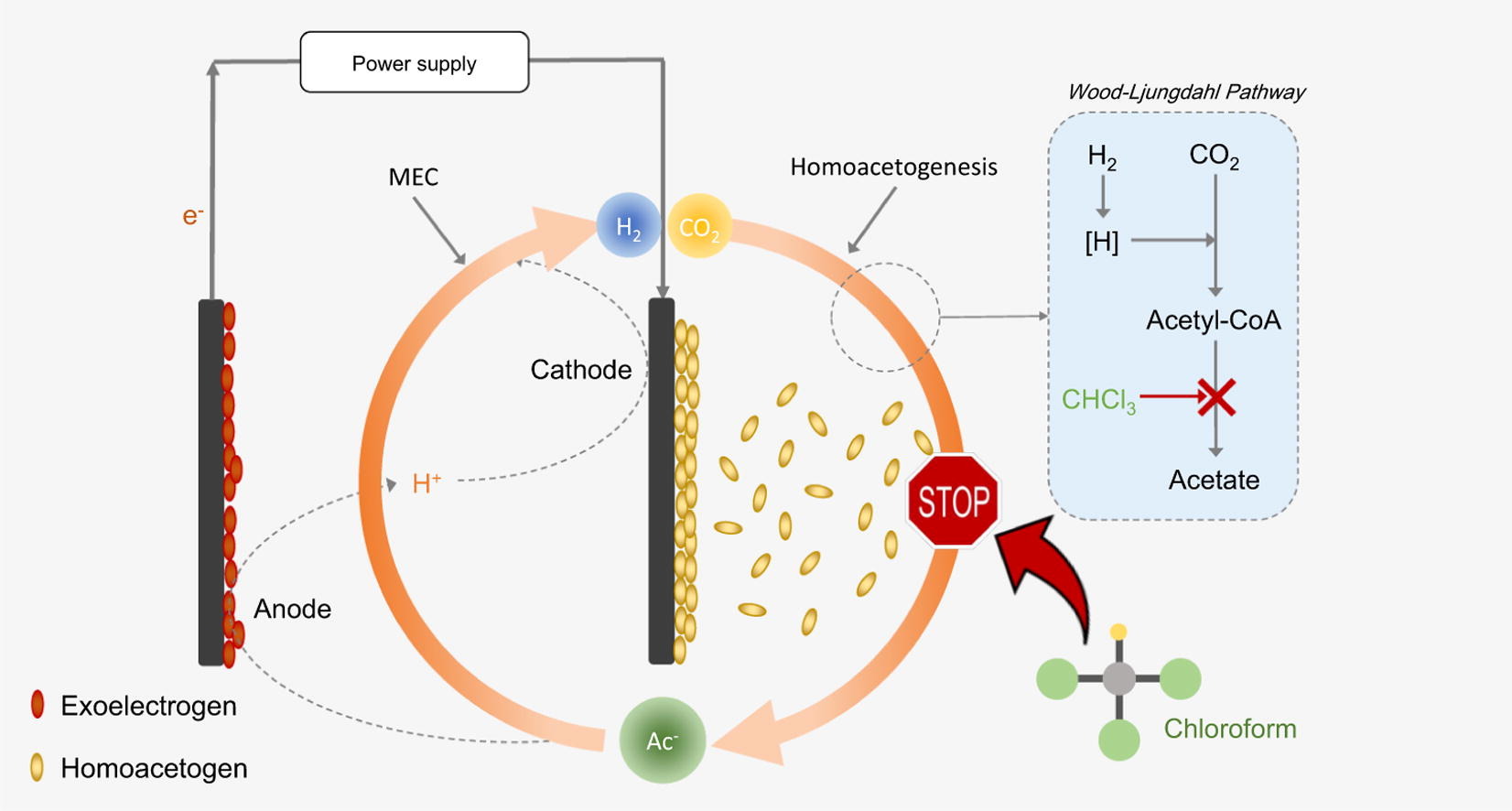 Method to inhibit homo acetogenins in bioelectrochemical fuel cells
Method to inhibit homo acetogenins in bioelectrochemical fuel cells
A small concentration of chloroform is used in the process, which after the experiment leaves traces of merely 0.001% which is negligible. Furthermore, 0.02 ml chloroform is used in ten litres of reactors, negating the chance of causing damage to the environment. “Microbial community analysis revealed that the amount ofhomoacetogenic Acetobacterium spp. was eliminated in the cathodic biofilms and planktonic cells by chloroform.”, enlightens Dr. Lakhveer. This method can also be applied in large scale reactors to enhance hydrogen production by inhibiting homo acetogenins. The hydrogen production rate is nearly 20 litres per hour from the reactor. The application of this reactor is the production of energy which can be used as an alternative to conventional fuel.
Advancing the work, Dr. Lakhveer aspires to improve this method in the future, through reducing the residual chloroform concentration and developing more environment-friendly inhibitor using similar mechanisms, that may lead to the practical application in MECs.
- Published in News, Research News
Synthesis of highly emissive and color tuanble CsPbBr3 Perovskite Nanocrystals via simple anion exchange
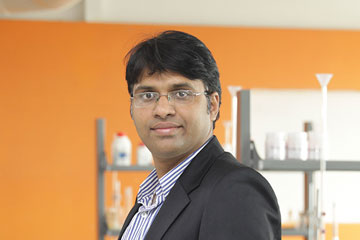 Dr. Nimai Mishra, Assistant Professor, Department of Chemistry, along with his research group comprising of his Ph.D. students Ms. V.G.Vasavi Dutt and Mr. Syed Akhil have published their recent work on “Fast, Tunable and Reversible Anion-Exchange in CsPbBr3 Perovskite Nanocrystals with Hydrohalic Acids” in the Journal “CrystEngComm”, Royal Society of Chemistry with an Impact factor 3.38.
Dr. Nimai Mishra, Assistant Professor, Department of Chemistry, along with his research group comprising of his Ph.D. students Ms. V.G.Vasavi Dutt and Mr. Syed Akhil have published their recent work on “Fast, Tunable and Reversible Anion-Exchange in CsPbBr3 Perovskite Nanocrystals with Hydrohalic Acids” in the Journal “CrystEngComm”, Royal Society of Chemistry with an Impact factor 3.38.
 Cesium-lead-halide perovskite nanocrystals In the research work, Dr. Mishra’s group has developed a very simple facile synthesis process of perovskite nanocrystals with very high emissive properties and colour tunability. Colloidal caesium-lead-halide perovskite nanocrystals (NCs) (CsPbX3, X = Cl, Br, I) are presently on-demand because of their excellent photoluminescence quantum yield (PLQY), wide range of band gap tunability and defect tolerance, finding its application as photodetectors, light-emitting diodes (LEDs), asing, and photovoltaics. Dr. Mishra informs, “Anion ( the halides) exchange in colloidal caesium-lead- halide perovskite nanocrystals (NCs) is a highly efficient protocol to tune their chemical composition and optoelectronic properties. In this work, we first report the use of hydrohalic acids (HX; X=Cl and Br) as a precursor for anion exchange which can be an efficient way to control the composition and optical properties of CsPbBr3 perovskite nanocrystals (NCs).” Furthermore, the team demonstrated a facile and efficient approach of anion-exchange which is implemented to tune the optical properties of CsPbX3 perovskite NCs via a simple post-synthetic modification with hydrohalic acids. Importantly, this work presents a simple, feasible, reproducible synthetic route toward control halide exchange in metal halide perovskite NCs with various optoelectronic properties.
Cesium-lead-halide perovskite nanocrystals In the research work, Dr. Mishra’s group has developed a very simple facile synthesis process of perovskite nanocrystals with very high emissive properties and colour tunability. Colloidal caesium-lead-halide perovskite nanocrystals (NCs) (CsPbX3, X = Cl, Br, I) are presently on-demand because of their excellent photoluminescence quantum yield (PLQY), wide range of band gap tunability and defect tolerance, finding its application as photodetectors, light-emitting diodes (LEDs), asing, and photovoltaics. Dr. Mishra informs, “Anion ( the halides) exchange in colloidal caesium-lead- halide perovskite nanocrystals (NCs) is a highly efficient protocol to tune their chemical composition and optoelectronic properties. In this work, we first report the use of hydrohalic acids (HX; X=Cl and Br) as a precursor for anion exchange which can be an efficient way to control the composition and optical properties of CsPbBr3 perovskite nanocrystals (NCs).” Furthermore, the team demonstrated a facile and efficient approach of anion-exchange which is implemented to tune the optical properties of CsPbX3 perovskite NCs via a simple post-synthetic modification with hydrohalic acids. Importantly, this work presents a simple, feasible, reproducible synthetic route toward control halide exchange in metal halide perovskite NCs with various optoelectronic properties.
Regarding the future scope of the research, Dr. Mishra informs, “These high-quality nanocrystals have the potential to be used as active material in LED devices, therefore our future plan is to make a prototype LED devices using our nanocrystals.”
Dr. Nimai Mishra is keen to collaborate, interested researchers may kindly contact him at nimai.m@srmap.edu.in
- Published in Research News
SRM AP organizes Webinar on “Inspire the Inspired: Excellent Research Opportunity in SRM University – AP”
The illuminating webinar on “Inspire the Inspired: Excellent Research Opportunity in SRM University – AP” was designed to describe the exciting research opportunities that are available at SRM University-AP, Andhra Pradesh. Prof. V.S. Rao, Vice-Chancellor, addressed the participants of the webinar with the opening remarks. He extended a warm welcome to the partakers, which was over 130. This impromptu webinar was organized to motivate the prospective Ph.D. students to join SRM AP for an illustrious career. Prof. V.S. Rao said, “SRM AP is pursuing the path of excellence by emphasizing research both in undergraduate (UG) and postgraduate (PG) level which played a crucial role in achieving the university’s aspiration to become an academy of distinction.” He highlighted that right from its inception, the University decided to recruit well-accomplished research-oriented faculty who have acquired a Ph.D. from reputed institutes or/and have international exposure. In its nascent stage, the faculty of SRM AP have published more than 200 papers in well-reputed journals with high Impact Factors.” Prof. V.S. Rao also applauded the incredible accomplishment of the faculty in getting 24 projects with a total outlay of Rs.12 crores from the Government of India Scientific Funding agencies in a short span. He added, “Committed, dedicated faculty working have worked relentlessly in the pursuit of excellence under the guidance of Prof. D. Narayana Rao, Pro Vice-Chancellor, whose leadership has steered their efforts in the best direction.”
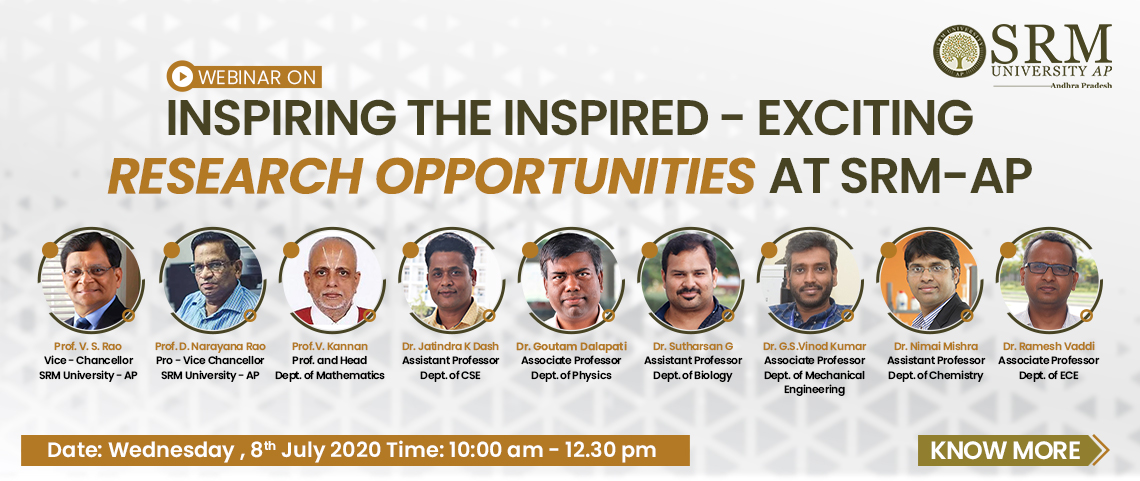 Prof. V.S. Rao concluded by mentioning that in India, research has taken a backseat as our nation is far behind other countries in producing Ph.D. students. “Now the time has come for higher education institutes to participate in Research and Development (R&D) by encouraging Ph.D. students. It is a matter of pride that at SRM AP, the faculty have involved undergraduate (UG) students in their research pursuits and publications.”, divulged Prof. V.S. Rao.
Prof. V.S. Rao concluded by mentioning that in India, research has taken a backseat as our nation is far behind other countries in producing Ph.D. students. “Now the time has come for higher education institutes to participate in Research and Development (R&D) by encouraging Ph.D. students. It is a matter of pride that at SRM AP, the faculty have involved undergraduate (UG) students in their research pursuits and publications.”, divulged Prof. V.S. Rao.
Prof. D. Narayana Rao asserted, “SRM AP provides exciting and challenging research opportunities that are of national importance and having social applications”. He welcomed all the participants of the webinar by explaining that the purpose of the webinar was to explicate the type of exciting research in frontline and emerging areas of science and technology being carried out at SRM AP. Through the webinar, he desired to motivate the students to join the Ph.D. programs at SRM AP by assuring them of an enviable career. He substantiated his statement by stating that all the faculty at SRM AP have obtained their Ph.D. from reputed institutes in India and abroad.
Prof. D. Narayana Rao initiated his presentation by displaying the model plan of SRM AP that is to be constructed in the next 5-10 years to explain the conducive environment offered at the university for creative thinking. Inaugurated on 15 July 2017, within 3 years, expert faculty with brilliant accomplishments and national and international characteristics have been associated with SRM AP. Prof. D. Narayana Rao described and explained various laboratories, experimental facilities, and world-class infrastructure of the university.
Prof. D. Narayana Rao informed the attendees of the webinar regarding the 132 faculty members, cross-cultural students, periodic research review meetings, and Active Learning centers at SRM AP which facilitates discussion among scholars and formation of innovative ideas. He added, “It is of honour and pride for our university to have INSPIRE faculty and students who have published journal papers having Impact Factor of more than 52. It is of prestige and privilege for any university to reach this stage within 3 years of its inception. We also involve UG students in research and one of them has developed Face Shield and patented the same.”
Prof. D. Narayana Rao enlightened about the collaborations of SRM AP with Indian Nanoelectronics User Program- The Indian Institute of Science (INUP-IISc), which would enable students to work at such centers, interact with faculty members of IISc, and expand their horizons of thinking and carrying out research. Prof. D. Narayana Rao declared that SRM AP has collaborated with National Atmospheric Research Laboratory (NARL) of Indian Space Research Organization (ISRO) in emerging areas of studies which are of paramount importance. He urged, “The students can explore these facilities and use the wisdom of many of the eminent personalities who would direct and guide students to conduct contemporary research.”
Prof. D. Narayana Rao notified the participants about the importance of Computational Materials. He said, “Previously, designing and developing materials used to take a decade. Now with computational materials, the same can be achieved in reduced time. SRM AP organized a conference with The Asian Consortium on Computational Materials Science (ACCMS) on 5th-6th February 2020. (For details, visit: https://srmap.edu.in/conferences/third-international-conference/)”. Prof. D. Narayana Rao further informed, “SRM AP has established centers in collaboration with Amara Raja Batteries to develop Lithium-ion (Li-ion) batteries. Dr. G. S. Vinod Kumar, Associate Professor, Department of Mechanical Engineering, has been working with Tanishq-Titan to develop lightweight jewellery using foam gold, which has also been filed for patenting. Apart from this, it is of extreme privilege that SRM AP is work in partnership with the Indian Railways to develop hydrogen infused trains”
Prof. D. Narayana Rao concluded by saying that SRM AP provides challenging and exciting research opportunities that cater to the industrial requirements. He motivated the prospective Ph.D. students to join SRM AP to develop vision, expertise, and commitment that would enable them to become leaders in their chosen areas of science and technology.
Further, the webinar steered students to seven breakout rooms where Dr. Goutam Kumar Dalapati represented Physical Science, Dr. Nimai Mishra spoke for Chemical Science, Prof. V. Kannan embodied Mathematics, Dr. Manjunatha Thondamal represented Biological Science, Dr. Jatindra Kumar Dash exemplified Computer Science and Engineering, Dr. Ramesh Vaddi spoke about Electrical and Electronics Engineering and Electronics and Communication Engineering, and Dr. G. S. Vinod Kumar gave a detailed presentation of the research activities of the Department of Mechanical Engineering. Faculty members shared details of SRM AP research programmes through presentations in each breakout room, and the participants interacted with them to discuss various plausible research areas.
- Published in News, Research News, Research Webinars, Webinars
Dr. Lakhveer Singh appointed in the Editorial Board of Journal Biomass conversion and Biorefinery
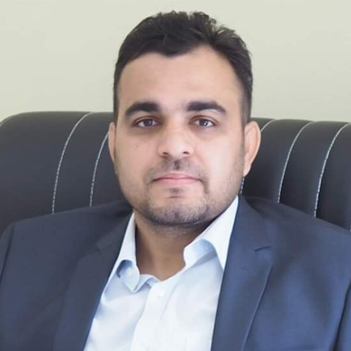 Dr. Lakhveer Singh, Assistant Professor, Department of Environmental Science has been appointed in the Editorial Board of Journal Biomass conversion and Biorefinery (IF 2.60), a reputed journal published by Springer Nature from Germany. Journal Biomass conversion and Biorefinery have eminent scientists and professors from the top-notch institutes such as the Imperial College, London, University of British Columbia, University of California, Utrecht University, and many others of the same accord in their Editorial Board.
Dr. Lakhveer Singh, Assistant Professor, Department of Environmental Science has been appointed in the Editorial Board of Journal Biomass conversion and Biorefinery (IF 2.60), a reputed journal published by Springer Nature from Germany. Journal Biomass conversion and Biorefinery have eminent scientists and professors from the top-notch institutes such as the Imperial College, London, University of British Columbia, University of California, Utrecht University, and many others of the same accord in their Editorial Board.
Dr. Lakhveer is the second Indian till date to join the Editorial Board of Journal Biomass Conversion and Biorefinery. To add credibility to the journal and/or commemorate important experts in the field, the journal appoints eminent contributors in its editorial board. This honourable position is offered by the journal to Dr. Lakhveer because of his excellent research and publication track record. He has been working in the area of Energy Production and Biomass Conversion which are relevant to the journal’s scope, and has published more than 65 research articles and 6 books in the domain. Dr. Lakhveer says, “Every journal depends on its editor(s) and board to leave an impact on the society’s development. This is really a great achievement for me as well as good for the University’s recognition across the globe.”
The primary functions of being an editorial board member include writing editorials, commenting on special issues, serving as high-volume reviewers of submitted articles, evaluating and managing editors and publishers, assessing their journal and the review process, partaking in long-term planning for the journal, and discussing special features and financial issues.”
Dr. Lakhveer aspires to continue contributing substantially to the research and development in the field of Energy Production and Biomass Conversion and effectively execute the responsibilities endowed to him by the journal in the coming days.
- Published in News, Research News
SRM AP faculty receives the prestigious grant by DBT/Wellcome Trust India Alliance
Investigating giant bacterial viruses to explore the origin of cellular complexity
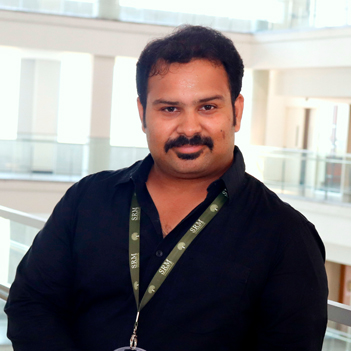 Dr. Sutharsan Govindarajan, Assistant Professor, Department of Biological Sciences, SRM University-AP has been awarded the prestigious ‘Early Career Fellowship’ grant by DBT/Wellcome Trust India Alliance, funded by the Department of Biotechnology (DBT) and the Wellcome Trust, United Kingdom. The fellowship supports outstanding young scientists to pursue high-quality research in the field of biomedical science and establish themselves as independent researchers in India. Dr. Sutharsan sought a total research grant of 1.1 crore for a period of 5 years as a DBT/Wellcome Trust India Alliance Early career fellow. The India Alliance grants are highly competitive and is based on the profile of the applicant and the novelty and the importance of the proposed research. Nationwide only less than 10 Early Career grants are awarded every year. Dr Sutharsan is a highly accomplished scientist, having published research articles in highly reputed journals, including the most prestigious Nature and Nature Microbiology. Through this fellowship, Dr. Sutharsan will establish an independent research laboratory at SRM University – AP with the support of Prof. Jayaseelan, Head, Department of Biological Sciences, and the fellowship supervisor of the project.
Dr. Sutharsan Govindarajan, Assistant Professor, Department of Biological Sciences, SRM University-AP has been awarded the prestigious ‘Early Career Fellowship’ grant by DBT/Wellcome Trust India Alliance, funded by the Department of Biotechnology (DBT) and the Wellcome Trust, United Kingdom. The fellowship supports outstanding young scientists to pursue high-quality research in the field of biomedical science and establish themselves as independent researchers in India. Dr. Sutharsan sought a total research grant of 1.1 crore for a period of 5 years as a DBT/Wellcome Trust India Alliance Early career fellow. The India Alliance grants are highly competitive and is based on the profile of the applicant and the novelty and the importance of the proposed research. Nationwide only less than 10 Early Career grants are awarded every year. Dr Sutharsan is a highly accomplished scientist, having published research articles in highly reputed journals, including the most prestigious Nature and Nature Microbiology. Through this fellowship, Dr. Sutharsan will establish an independent research laboratory at SRM University – AP with the support of Prof. Jayaseelan, Head, Department of Biological Sciences, and the fellowship supervisor of the project.
In this project, Dr. Sutharsan plans to venture and explore the biology of a novel class of bacteriophages called Jumbo-phages. “Bacteriophages, which are the most abundant biological entities on the planet, are viruses that infect bacteria but do not harm humans. Jumbo-phages, as the name suggests, are giant viruses with large genome. A sneak peek into their lifestyle during my postdoctoral research led me, to realize that these phages build fascinating complex structures inside the bacteria they infect. Such complex structures are well known to be formed in eukaryotic cells like human cells but was not thought to be made by bacteriophages, which have evolved billions of years before eukaryotes. Thus, studying how such cellular structures are formed by jumbo-phages provides a unique opportunity to investigate the origin of complex life” informs Dr. Sutharsan. He also explains that the proposed research has several biotechnological applications such as phage therapy and synthetic biology.
Dr. Sutharsan further shares, “This is one the best fellowships, a young scientist can obtain in India. It is an honour, prestige and a recognition for the scientist as well as to the University. In the next 5 years, I anticipate major fundamental discoveries in the field of bacteriophage biology and evolution”.
- Published in News, Research News


